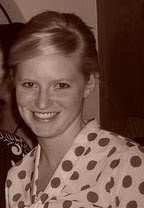A species list is simply a record of all of the recognizable species in the area. Take a notebook and a pencil (I learned the first day that my smooth, black-inked rollerball pen was not the best choice in drizzly weather.) and then wander around noting everything you see. If you don’t know what something is, collect a sample or take good note so that it can be identified later. A species list gives a sense of the plant diversity in the area and can be used to track the progress of a prairie over time.
Transect sampling is harder to do on your own, but it’ll provide more quantitative information about a prairie. A transect is a line made across the space. The line is then used as a guide for taking samples. The transects that we performed were 30 m long. At each meter, we took a sample using a 1/10 m sq. quadrat. The quadrat tool looked like a large tuning fork. We slid the fork into the vegetation at each meter mark and then estimated the basal coverage of each species inside the rectangle. At the base, plants take up much less space than you’d think. Most of the species accounted for no more than 1% of the quadrat, despite appearing thick at canopy level.
This kind of sampling could take quite a while, depending on how much of the vegetation we recognized. Inevitably there would be a few sprigs of something green that we’d have to show Dr. S. for identification. Sometimes he’d know right away, other times he’d have to look through a plant guide, carefully eliminating species until he knew the answer. On a few rare occasions, Dr. S. would look at the seedlings we brought him and shake his head. “Too tiny to even see,” he’d complain, telling us to bring him an actual plant next time.
And so, we learned to sample each prairie, down on our hands and knees, collecting data and chigger bites.
Out west, the sampling was different. During the first week of class, we had learned over fifty common Iowa species. In South Dakota, the plant life looked nothing like the wetter, greener Iowan prairies. There were no Canada anemones or golden alexanders. Instead, we started learning to recognize the split ligule of needle and thread grass and to differentiate between hairy grama and side-oats grama. There, the grasses seemed more diverse, and the forbs—scarlet globemallow, black Samson, fringed sagewort, ball cactus—more easily distinguished.

We tried to do three or so transects a day, mostly in the Badlands and Wind Cave National Park, but we also stopped in the Nebraska Sandhills on the drive back toward Iowa for a couple of samples. We missed a couple of sites due to rain and muddy roads too treacherous for a thirteen passenger van.
Only one transect was left incomplete. At Wind Cave, we worked on a transect of a meadow that prairie dogs had taken over in the last 6 or so years. The squeaking prairie dogs weren’t the only wildlife present that day and before long a herd of buffalo came over to see what we were doing. They approached us very slowly, probably trying not to scare us away. Dr. S. didn’t seem worried, so we kept working. Halfway through, however, he stopped us gently, but urgently. “Finish up the quadrat you’re on, then pack it up.” He rolled in the measuring tape and started toward the van.
The biggest bison, the bull, was now headed our way. We fudged some final numbers, made our way across the meadow, and grabbed cameras for a few pictures. The buffalo kept following; apparently now intent on frightening us away. We hopped in the van and took off.


I never knew exactly what you guys were doing out there! That is awesome. It sounds like you all really did learn a great deal. Hopefully it was all worth it. I miss it out there. It was certainly a pleasure. I must say it was funny that it was time to go when the big bull said it was time to go. Even funnier was that you fudged a few numbers. Great pictures!
ReplyDelete